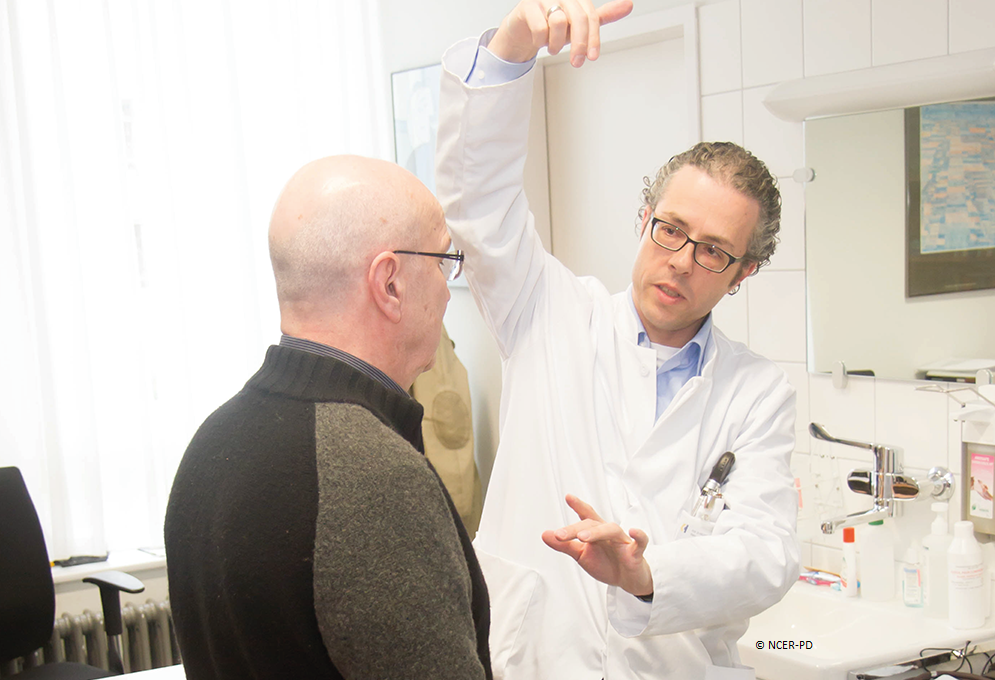
Collaborative networks help improve the life of Parkinson’s disease patients
Important research being carried out in the University of Luxembourg’s Luxembourg Centre for Systems Biomedicine (LCSB) on Parkinson’s Disease is having a global impact. Global electronics giant Phillips and Portabilis came to LCSB to help them find the missing piece of the puzzle in their quest to develop a combined sensor to prevent falls in Parkinson’s patients. Phillips already had a sensor that could detect a fall and alert for help. But researchers believed that a combined sensor would make it possible to recognise an acute risk of falling before it happened and generate early enough alerts to call for help at the same time.
LCSB plays a coordinating role in Luxembourg’s National Centre of Excellence in Research on Parkinson’s Disease (NCER-PD). This is a joint Parkinson’s Disease research program that includes several biomedical research partners committed to finding new ways to affect earlier diagnoses and develop better treatments. LCSB established, and currently manages, the data and computation platform for the project. This platform provides the core competencies and technologies used for integration, curation and analysis of multidimensional data using well-grounded machine learning and computational modelling approaches to enable data analysis and interpretation.
Sensing Hazard Before it Strikes
In the scope of the NCER-PD project’s research, data is collected on the walking patterns of Parkinson’s patients. Patients wear shoes outfitted with special sensors that generate a continuous stream of data about relevant indicators, such as stride length, tripping frequency and more. Using this digital health approach, the NCER-PD data can help identify patterns in the gait that could be clear signs of imminent falls.
Combining the Phillips system with the NCER-PD approach, researchers believe that it may be possible to prevent injury if patients fall. For example, designing special hip airbags that inflate immediately before the fall. Other early warning systems can be integrated to prevent the fall from happening in the first place if certain warning parameters are noted.
R&E Network Enables Multi-Layered Collaboration
To develop the sensor and the other clinical and pharmaceutical research for the NCER-PD project, LCSB researchers need to process huge amounts of data, corroborate the data and collaborate among the five major partners in the project: Luxemburg Institute of Health, the Centre Hospitalier de Luxembourg, the Integrated Biobank of Luxembourg and the Laboratoire National de Santé, as well as other collaborators in academia and industry. “The project generates data on different levels, from the clinical examination of the neurologist and sensor-based data to large-scale molecular data from high-throughput analysis methods such as genomics or metabolomics,” explains Prof. Reinhard Schneider, Head of the LCSB’s Bioinformatics Core which is in charge of the NCER-PD’s data repository. “The challenge lies in the integration of different data types to make them available for combined biomarker discovery.”
This collaborative computational infrastructure is possible because of the RESTENA Foundation’s world-class national research & education network. The RESTENA Foundation provides essential infrastructure necessary for the work of the University of Luxembourg and nearly all of the NCER-PD project partners who are working to develop the next generation of diagnostic and treatment models for patients with Parkinson’s disease.
LCSB was the first interdisciplinary biomedical research centre of the University of Luxembourg. Its main focus is on the study of neurodegenerative diseases, with an emphasis on Parkinson’s disease. It was established 10 years ago to accelerate biomedical research by closing the link between systems biology and medical research. The Centre supports a broad range of data-intensive scientific research in Luxembourg in the computational realm, including bioinformatics, biomedical data science, computational biology and systems control.



![]()
![]()
![]()
Expanding Pan-European Cooperation
Recognising how important this work is, LCSB wished to contribute on a larger scale and internationally. In 2017, the Centre applied to become a regular member of the European Institute of Innovation & Health (EIT) following its successful participation in EIT-Health initiatives such as the moveIT, in which both the LCSB and its startup ITTM participated. At the end of 2018 Luxembourg became the third member country in the EIT in the region to form EIT BeNeLux.
 “EIT projects, in which ideas from various partners come together, will help us enormously to bring our fundamental research to the patient as a concrete benefit,” says NCER-PD Coordinator Prof. Rejko Krüger. “EIT Health offers a favourable environment for that: outstanding partners, truly good and proven infrastructures, and a financial endowment with which projects can be carried through to completion.”
“EIT projects, in which ideas from various partners come together, will help us enormously to bring our fundamental research to the patient as a concrete benefit,” says NCER-PD Coordinator Prof. Rejko Krüger. “EIT Health offers a favourable environment for that: outstanding partners, truly good and proven infrastructures, and a financial endowment with which projects can be carried through to completion.”
For more information please contact our contributor(s):


